Opinion & Analysis
Who knows how to fit better than the source?
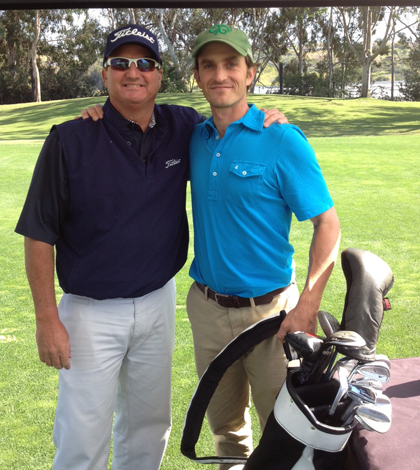
Last week I traveled to seemingly always weather-perfect Carlsbad, Calif., where I did a full club fitting at Titleist’s Oceanside facility.
It was the second time in as many months that I have visited the guys with the cursive logo, the last time being specifically for a Vokey wedge fitting. It also happened to be the second time that I have done a full club fitting.
The first time was with Nike in Spring 2012, or just a few months after swinging the driver and 3-wood for my first time ever. During that fitting, my goal was more about making contact with the ball instead of fine tuning gear for a grooved swing; and they didn’t have a lefty 3-wood at the fitting, so that stick was assumed into my bag without a full test run.
In the 12 months since then I have put in about 1,000 hours of practice and countless rounds. My consistency has improved from something resembling a blindfolded chimp to a precociously self-assured golfer looking to improve upon his 6 handicap, and it was time to get fit for some gear that can help me reach the next level.
Back in February when my Vokey TVD wedges arrived, I had never swung any sticks that were not branded with a swoosh, and was so happy with the Vokey’s performance that I decided to return to Carlsbad to switch out the remaining clubs. When I first went down there, I didn’t realize that it was possible to get fit by the same guys who fit their PGA Tour pros and was blown away by the experience, so decided that going to the source was the best way to make certain that I was getting the best fit for my game.
It was a beautiful April day in Oceanside and my club fitter was Sr. Fitting Analyst Rob Bunn. We had worked together on the wedges so he knew some of my tendencies, which was great as we could get right to work. At the beginning of the experience you change into golf shoes, grab a water (or coffee for guys like me, being a Portland boy) and head out to the pristine range where a section of perfect grass is reserved for you.
They ask you to space your divots out instead of putting them all right next to each other, as they say the grass heals better when it’s individual divots rather than a large section missing. This seems to be contrary to how most grass ranges want you to hit, but I’ll assume they know what they are talking about as they have done this for years and the sod all seems perfect:
To start, I got a hard time from the boys as I hadn’t had time to clean my grooves before flying out from Oregon. They joked with me about it — they knew I understood how important it is for spin to keep my grooves clean. But I had gone straight from course to airport and didn’t have a chance. Walking up to the facility, my last thought had been, “Please don’t look at how dirty those wedges are.”
I warmed up by hitting my gamer clubs, which were Nike Pro Combos with Project X PXI shafts (5 though 9 iron), 21- and 24-degree hybrids with Tour AD stiff shafts and a Mach Speed SQ 10.5 degree Driver with a Project X 6.0 stiff shaft. I’ve had a few Nike drivers, but for some reason that one seems to be the lesser of the evils when mixed with my swing.
I only had 13 clubs (also in the bag is a SeeMore putter, 46 degree Vokey that I use as my pitching wedge and a 50, 54 and 58 degree wedge) because I had taken the Nike 3 wood out a few months ago due to the fact that I hit the 3-hybrid just as far and more consistent. For some reason, I could never get the 3 wood to travel more than about 210 total yards, and it always felt to me like hitting golf balls with an oversized chop-stick. I’ve been testing out a number of different 3 woods, but figured I would wait until this trip to purchase one as I wanted to make sure it fit me. It didn’t make sense to buy a 3 wood a month or two before getting fit for clubs.
My fitting began with the 8 iron. Rob would hand me clubs, and I would hit some balls while he watched the flight and the Doppler radar launch monitor gathered the swing and ball data. Every time he handed me a new stick, I would swing it a few times and all sorts of different results would ring in. It was pretty astonishing. The same swing (or at least extremely similar swings) would produce five push fades or five hooks — or five fat and thin shots or five nice baby draws. It’s amazing how much the lie angle and shaft can make a difference.
We quickly decided that the AP2 712 was the right iron head, and almost as quickly that the KBS Tour stiff shafts stood out as a winner. That combo, along with a standard length and standard lie produced a nice shot nearly every time. When trying the 5 iron, the same results occurred and I was sold on the setup as was Rob. Due to the ball speed and trajectory, he decided that 1 degree strong would be the way to go with all of my irons, too.
Because of the amount of spin my swing put on the ball, he decided that I should go with 4 through 9 irons and one hybrid instead of going my old set up. My 21- and 24-degree hybrids produced very similar shots, so it made sense to me to have one rescue and a 4-iron, as in theory the 4 iron would be easier to control. So the next step was finding the right hybrid.
I was having issues with all of my swings, in part because my gamer irons had been, for some reason, 3 to 4 degrees flatter than I needed. It’s an entirely different topic, but along with an overly flat swing I had ingrained a wrist flip through the impact zone. Now that I was trying out standard lie clubs and have been working on a steeper swing, my miss was to keep that wrist flip in the swing and hook some shots. Rob saw this and after struggling with the hybrids, he decided to switch it up and fit me for a driver. So, we took a detour and started hitting some 913 drivers.
The driver was my No. 1 priority, and main reason for wanting to go to Titleist to get professionally fit. I was happy to see that TPI Oceanside had plenty of Lefty options.
I’ve been struggling with that stick since first hitting one in mid-November 2011, and wanted to take the uncertainty of ill-fitting gear out of the equation. It’s far too easy to blame your sticks if you are uncertain of their characteristics, and blaming gear will never help you improve.
Instead, I NEEDED to find a driver that I KNEW fit me, so I could move on and focus solely on technique and trust it to move forward. My driving has been like Bill Paxton’s acting: almost always sub-par, but on random occasions showing up and surprising everyone. Not good enough and I have been focusing on tee shots in practice.
He first gave me a regular flex shaft, and I sliced a ball over the left fence that seemed way to high to hit over. Then pull-hooked one off the planet. It was pretty obvious I needed a bit less action between my hands and the club head, so we went to stiffer.
I was still lacking in control and missing too far in both directions, so the next step was to invite Titleist Vice President of Tour Promotions Larry Bobka to check out my swing. Larry was able to identify a few things that I could do to improve consistency. I listened to his advice, which happened to be exactly what I was working on back in Portland, and started seeing great results once they put a 913 D3 head on a Speeder VC 7.2 Extra Stiff 44.5 inch shaft that was tipped 0.5 inches.
I knew I didn’t like regular or even stiff shafts, but this extra stiff felt awesome. Even though we went with a 44.5 inch shaft, my ball speed on the range was still between 155 and 160 mph, and Larry said with some form improvements I could see that increase by 5 to 6 mph. That would put me right around the PGA Tour average of 165 mph ball speed with the driver. I know I’ll never be the longest guy by any means, but if I can get my tee shots to PGA Tour average then I know I will be able to keep up with the crowd.
I hit a number of drives with this setup and was very happy with the results. It seemed like the perfect fit. Now the goal was to find a 3 wood and hybrid to fill the final two gaps in the bag.
The 3 wood wasn’t too tough now that we knew more about my swing via the driver fitting. Rob went with a couple of options before landing on the 913F D2 (15 degrees) with an extra stiff Diamana White Board Plus 82 shaft that was 0.5 inches under standard length. We tipped its shaft 0.5 inches as well, and it felt great.
I loved the control that I had with the extra stiff shaft, because it felt like the club head was staying with me no matter how hard or easy I wanted to swing. The numbers were good, too, as I was getting about 140 to 145 mph of ball speed. It was hard to tell what distance things were flying because it was into a stiff wind, but the shot shape was nice and the ball speed was what they were looking for so all was well.
The final step was the hybrid. Now that I was more confident and my swing was under control, it was much easier to find the right fit. Just a few options in, we went with the 913H D3 (19 degrees) with a Diamana Blue Board Plus 82 extra stiff shaft at a standard length. It was odd, but the standard length hybrid fit better, even though the driver and 3 wood were best fit at 0.5 inches shorter than standard.
I never would have guessed at most of these settings, but that is why I went to the source to figure out what I should be hitting. When I last was fit for clubs more than a year ago I had been swinging woods and drivers for barely four months and had not come close to grooving a swing. In fact, during my original fitting in early 2012 my main goal was just to hit the ball — I wasn’t thinking about shot shape and control. I can imagine that it was very hard to fit me into anything, as my swing was so new.
A lot of time and practice has happened since that fitting and it is crucial for performance to stay on top of your gear. I am very excited about getting these new sticks and cannot wait to start practicing with them. There will definitely be an adjustment period as the lies, length, weights, etc. are different, but after a week or two of grinding on the course and range the changes will hopefully start to pay off.
The next post will be about the launch monitor specifics between my current clubs and the new Titleists that will arrive soon. We shall get to the bottom of exactly how much periodically getting fit for sticks can positively change your game through some concrete data.
To wrap things up, here’s “What’s in the bag.”
Driver: Titleist 913 D3 (9.5 degrees)
Setting: D4
Shaft: Fujikura Motore Speeder VC 7.2 X (Tipped 0.5 inches, 0.5 inches under standard)
3 Wood: Titleist 913F D2 (15 degrees)
Setting: D4
Shaft: Mitsubishi Rayon Diamana White Board Plus 82X (Tipped 0.5 inches, 0.5 inches under standard)
Hybrid: Titleist 913H D3 (19 degrees)
Shaft: Mitsubishi Rayon Diamana Blue Board plus 82X
Irons: Titleist AP2 (4-9, bent 1 degree strong)
Shafts: KBS Tour (S-Flex)
Wedges: Titleist Vokey SM4 (46-08 and 50-08), Vokey TVD M Grind (54 and 58)
Shafts: Dynamic Gold S200
Putter: SeeMore mFGP
Ball: Titleist Pro V1X
Editor’s Note: The cost of an individual fitting (metal woods, irons or wedges) at TPI Oceanside is $200. A full bag fitting is $500. All equipment is sold separately through authorized Titleist accounts.
Opinion & Analysis
The 2 primary challenges golf equipment companies face
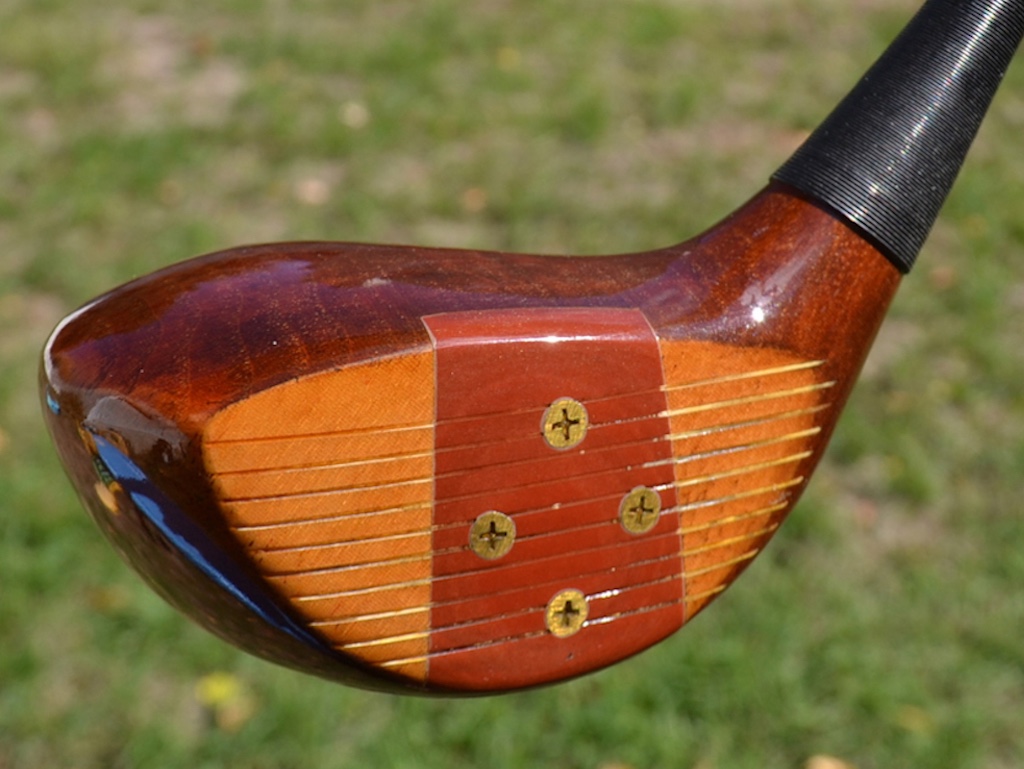
As the editor-in-chief of this website and an observer of the GolfWRX forums and other online golf equipment discourse for over a decade, I’m pretty well attuned to the grunts and grumbles of a significant portion of the golf equipment purchasing spectrum. And before you accuse me of lording above all in some digital ivory tower, I’d like to offer that I worked at golf courses (public and private) for years prior to picking up my pen, so I’m well-versed in the non-degenerate golf equipment consumers out there. I touched (green)grass (retail)!
Complaints about the ills of and related to the OEMs usually follow some version of: Product cycles are too short for real innovation, tour equipment isn’t the same as retail (which is largely not true, by the way), too much is invested in marketing and not enough in R&D, top staffer X hasn’t even put the new driver in play, so it’s obviously not superior to the previous generation, prices are too high, and on and on.
Without digging into the merits of any of these claims, which I believe are mostly red herrings, I’d like to bring into view of our rangefinder what I believe to be the two primary difficulties golf equipment companies face.
One: As Terry Koehler, back when he was the CEO of Ben Hogan, told me at the time of the Ft Worth irons launch, if you can’t regularly hit the golf ball in a coin-sized area in the middle of the face, there’s not a ton that iron technology can do for you. Now, this is less true now with respect to irons than when he said it, and is less and less true by degrees as the clubs get larger (utilities, fairways, hybrids, drivers), but there remains a great deal of golf equipment truth in that statement. Think about it — which is to say, in TL;DR fashion, get lessons from a qualified instructor who will teach you about the fundamentals of repeatable impact and how the golf swing works, not just offer band-aid fixes. If you can’t repeatably deliver the golf club to the golf ball in something resembling the manner it was designed for, how can you expect to be getting the most out of the club — put another way, the maximum value from your investment?
Similarly, game improvement equipment can only improve your game if you game it. In other words, get fit for the clubs you ought to be playing rather than filling the bag with the ones you wish you could hit or used to be able to hit. Of course, don’t do this if you don’t care about performance and just want to hit a forged blade while playing off an 18 handicap. That’s absolutely fine. There were plenty of members in clubs back in the day playing Hogan Apex or Mizuno MP-32 irons who had no business doing so from a ballstriking standpoint, but they enjoyed their look, feel, and complementary qualities to their Gatsby hats and cashmere sweaters. Do what brings you a measure of joy in this maddening game.
Now, the second issue. This is not a plea for non-conforming equipment; rather, it is a statement of fact. USGA/R&A limits on every facet of golf equipment are detrimental to golf equipment manufacturers. Sure, you know this, but do you think about it as it applies to almost every element of equipment? A 500cc driver would be inherently more forgiving than a 460cc, as one with a COR measurement in excess of 0.83. 50-inch shafts. Box grooves. And on and on.
Would fewer regulations be objectively bad for the game? Would this erode its soul? Fortunately, that’s beside the point of this exercise, which is merely to point out the facts. The fact, in this case, is that equipment restrictions and regulations are the slaughterbench of an abundance of innovation in the golf equipment space. Is this for the best? Well, now I’ve asked the question twice and might as well give a partial response, I guess my answer to that would be, “It depends on what type of golf you’re playing and who you’re playing it with.”
For my part, I don’t mind embarrassing myself with vintage blades and persimmons chasing after the quasi-spiritual elevation of a well-struck shot, but that’s just me. Plenty of folks don’t give a damn if their grooves are conforming. Plenty of folks think the folks in Liberty Corner ought to add a prison to the museum for such offences. And those are just a few of the considerations for the amateur game — which doesn’t get inside the gallery ropes of the pro game…
Different strokes in the game of golf, in my humble opinion.
Anyway, I believe equipment company engineers are genuinely trying to build better equipment year over year. The marketing departments are trying to find ways to make this equipment appeal to the broadest segment of the golf market possible. All of this against (1) the backdrop of — at least for now — firm product cycles. And golfers who, with their ~15 average handicap (men), for the most part, are not striping the golf ball like Tiger in his prime and seem to have less and less time year over year to practice and improve. (2) Regulations that massively restrict what they’re able to do…
That’s the landscape as I see it and the real headwinds for golf equipment companies. No doubt, there’s more I haven’t considered, but I think the previous is a better — and better faith — point of departure when formulating any serious commentary on the golf equipment world than some of the more cynical and conspiratorial takes I hear.
Agree? Disagree? Think I’m worthy of an Adam Hadwin-esque security guard tackle? Let me know in the comments.
@golfoncbs The infamous Adam Hadwin tackle ? #golf #fyp #canada #pgatour #adamhadwin ? Ghibli-style nostalgic waltz – MaSssuguMusic
Podcasts
Fore Love of Golf: Introducing a new club concept

Episode #16 brings us Cliff McKinney. Cliff is the founder of Old Charlie Golf Club, a new club, and concept, to be built in the Florida panhandle. The model is quite interesting and aims to make great, private golf more affordable. We hope you enjoy the show!
Opinion & Analysis
On Scottie Scheffler wondering ‘What’s the point of winning?’
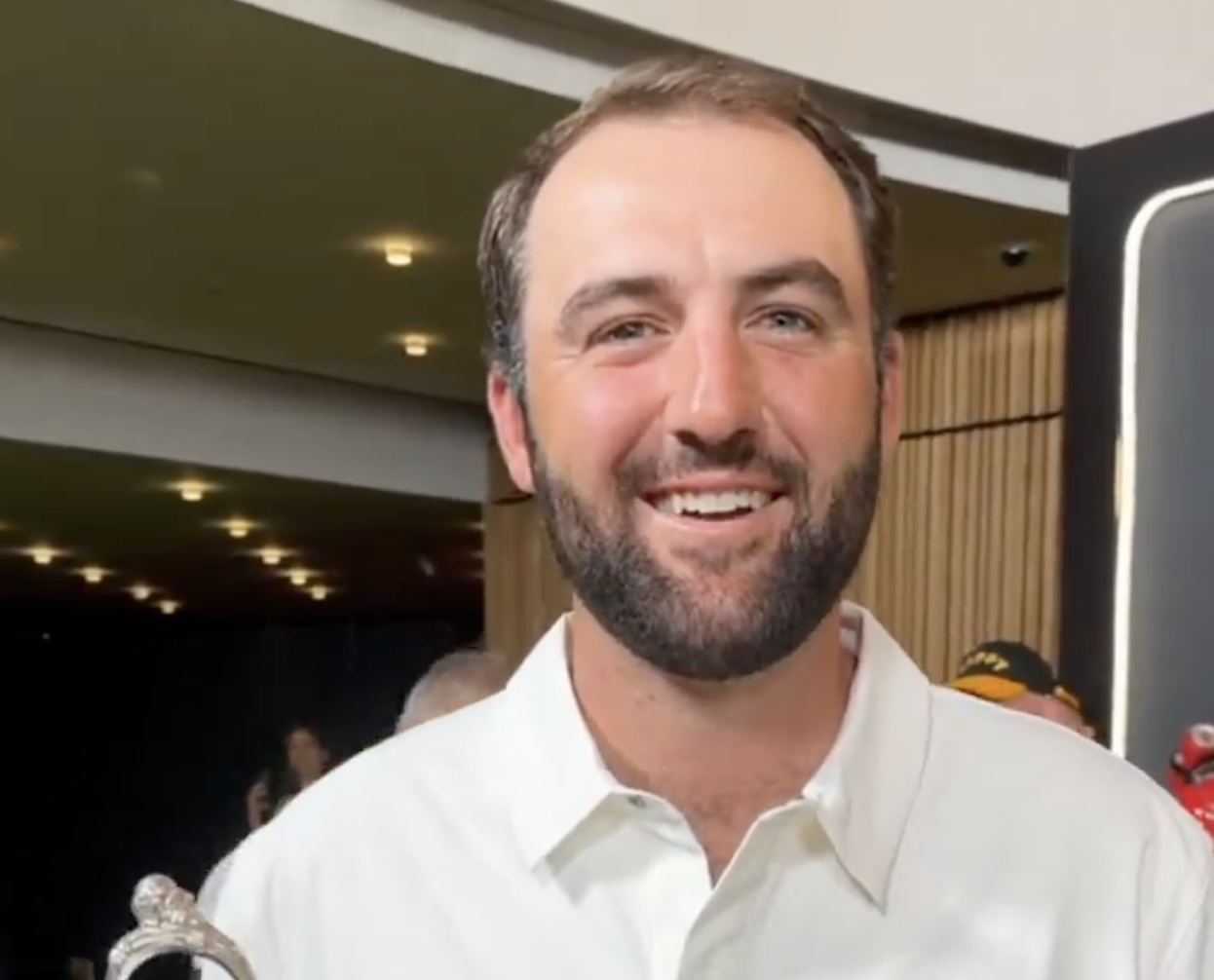
Last week, I came across a reel from BBC Sport on Instagram featuring Scottie Scheffler speaking to the media ahead of The Open at Royal Portrush. In it, he shared that he often wonders what the point is of wanting to win tournaments so badly — especially when he knows, deep down, that it doesn’t lead to a truly fulfilling life.
View this post on Instagram
“Is it great to be able to win tournaments and to accomplish the things I have in the game of golf? Yeah, it brings tears to my eyes just to think about it because I’ve literally worked my entire life to be good at this sport,” Scheffler said. “To have that kind of sense of accomplishment, I think, is a pretty cool feeling. To get to live out your dreams is very special, but at the end of the day, I’m not out here to inspire the next generation of golfers. I’m not out here to inspire someone to be the best player in the world, because what’s the point?”
Ironically — or perhaps perfectly — he went on to win the claret jug.
That question — what’s the point of winning? — cuts straight to the heart of the human journey.
As someone who’s spent over two decades in the trenches of professional golf, and in deep study of the mental, emotional, and spiritual dimensions of the game, I see Scottie’s inner conflict as a sign of soul evolution in motion.
I came to golf late. I wasn’t a junior standout or college All-American. At 27, I left a steady corporate job to see if I could be on the PGA Tour starting as a 14-handicap, average-length hitter. Over the years, my journey has been defined less by trophies and more by the relentless effort to navigate the deeply inequitable and gated system of professional golf — an effort that ultimately turned inward and helped me evolve as both a golfer and a person.
One perspective that helped me make sense of this inner dissonance around competition and our culture’s tendency to overvalue winning is the idea of soul evolution.
The University of Virginia’s Division of Perceptual Studies has done extensive research on reincarnation, and Netflix’s Surviving Death (Episode 6) explores the topic, too. Whether you take it literally or metaphorically, the idea that we’re on a long arc of growth — from beginner to sage elder — offers a profound perspective.
If you accept the premise literally, then terms like “young soul” and “old soul” start to hold meaning. However, even if we set the word “soul” aside, it’s easy to see that different levels of life experience produce different worldviews.
Newer souls — or people in earlier stages of their development — may be curious and kind but still lack discernment or depth. There is a naivety, and they don’t yet question as deeply, tending to see things in black and white, partly because certainty feels safer than confronting the unknown.
As we gain more experience, we begin to experiment. We test limits. We chase extreme external goals — sometimes at the expense of health, relationships, or inner peace — still operating from hunger, ambition, and the fragility of the ego.
It’s a necessary stage, but often a turbulent and unfulfilling one.
David Duval fell off the map after reaching World No. 1. Bubba Watson had his own “Is this it?” moment with his caddie, Ted Scott, after winning the Masters.
In Aaron Rodgers: Enigma, reflecting on his 2011 Super Bowl win, Rodgers said:
“Now I’ve accomplished the only thing that I really, really wanted to do in my life. Now what? I was like, ‘Did I aim at the wrong thing? Did I spend too much time thinking about stuff that ultimately doesn’t give you true happiness?’”
Jim Carrey once said, “I think everybody should get rich and famous and do everything they ever dreamed of so they can see that it’s not the answer.”
Eventually, though, something shifts.
We begin to see in shades of gray. Winning, dominating, accumulating—these pursuits lose their shine. The rewards feel more fleeting. Living in a constant state of fight-or-flight makes us feel alive, yes, but not happy and joyful.
Compassion begins to replace ambition. Love, presence, and gratitude become more fulfilling than status, profits, or trophies. We crave balance over burnout. Collaboration over competition. Meaning over metrics.
Interestingly, if we zoom out, we can apply this same model to nations and cultures. Countries, like people, have a collective “soul stage” made up of the individuals within them.
Take the United States, for example. I’d place it as a mid-level soul: highly competitive and deeply driven, but still learning emotional maturity. Still uncomfortable with nuance. Still believing that more is always better. Despite its global wins, the U.S. currently ranks just 23rd in happiness (as of 2025). You might liken it to a gifted teenager—bold, eager, and ambitious, but angsty and still figuring out how to live well and in balance. As much as a parent wants to protect their child, sometimes the child has to make their own mistakes to truly grow.
So when Scottie Scheffler wonders what the point of winning is, I don’t see someone losing strength.
I see someone evolving.
He’s beginning to look beyond the leaderboard. Beyond metrics of success that carry a lower vibration. And yet, in a poetic twist, Scheffler did go on to win The Open. But that only reinforces the point: even at the pinnacle, the question remains. And if more of us in the golf and sports world — and in U.S. culture at large — started asking similar questions, we might discover that the more meaningful trophy isn’t about accumulating or beating others at all costs.
It’s about awakening and evolving to something more than winning could ever promise.




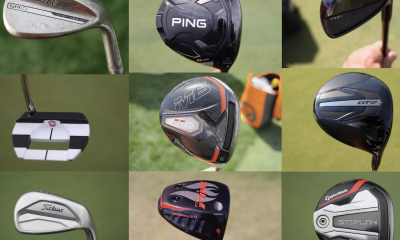

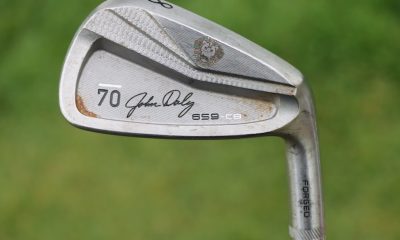

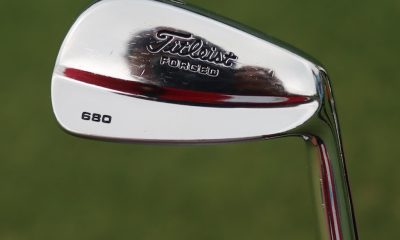

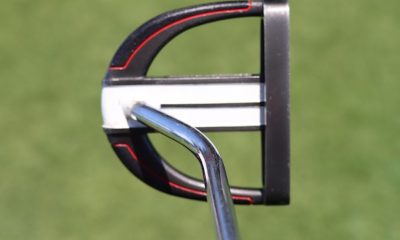

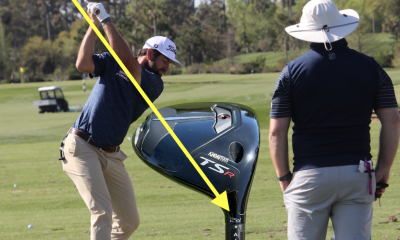



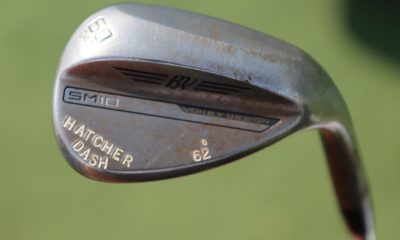

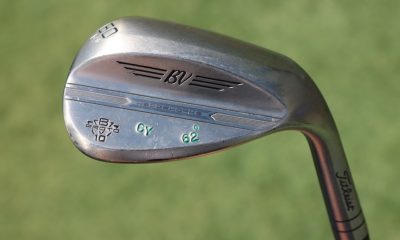

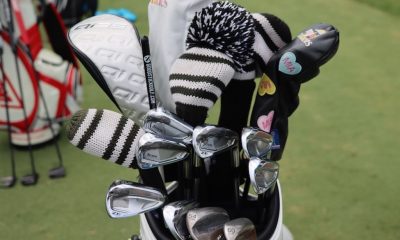

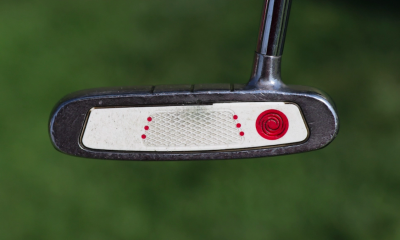

David
May 3, 2013 at 8:16 pm
Dan,
Nice that you got to go to the source! What is missing now is a Scotty Cameron Putter!!!! If your going to get the best gear you need to go all the way 🙂
Pingback: Who knows how to fit better than the source? – GolfWRX | Golf Grip Instruction
Mike
May 2, 2013 at 5:19 pm
Nice write up, Dan. I’m interested in your bag. Is it custom made? Also, all Titleist but no Scotty?
Dan Plan
May 3, 2013 at 7:39 pm
Hi Mike,
It’s a custom Vokey bag but I believe that you can order one online. I really like my SeeMore putter so didn’t see a reason to switch over.
Thanks!
Dan
Nick
May 2, 2013 at 3:10 pm
Titleist is the bomb. Got fit by them a year ago and saw immediete improvement. The change in my driver trajectory put ten yards on my drive immedietly with probably 15 percent more fairways. Massive game changer for me. While I did not see (or frankly desire) distance gains with my irons, the “cone” of my misses narrowed considerably. This was seen literally the second and third rounds I played with my new set (I think the pressure of playing with a new set and the overwhelming desire to see immediate improvmeent dooms the first round out with new equipment).
Rich
May 2, 2013 at 2:32 pm
Thanks for the review on the fitting. I live in socal and was wondering about getting fitted at Titleist compared to a Golf Smith or Roger Dunn. I was wondering about the cost as well.
Daniel
May 2, 2013 at 1:31 pm
I bet that was awesome getting all that info about your clubs and your swing, but most importantly being able to trust it since you were “at the source.”
Can a reader ask how much that fitting experience costs?
Zak Kozuchowski
May 2, 2013 at 5:22 pm
The cost of an individual fitting (metal woods, irons or wedges) at TPI Oceanside is $200. A full bag fitting is $500. All equipment is sold separately through authorized Titleist accounts.
You can learn more here — http://www.titleist.com/golf-club-fitting/
– Zak